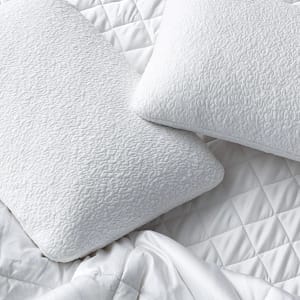Do you know that the average American spends around 7 hours and 14 minutes glued to screens?[1] It’s quite alarming, isn’t it?
Excessive use of electronic devices with screens has become a universal problem, wreaking havoc on our sleep quality. According to Very Well Health, 1 in 10 adults suffers from chronic insomnia disorder.[2] However, completely avoiding these devices is almost impossible. Sometimes it’s necessary, sometimes it’s just habitual. But fear not, there are ways to minimize their negative impact on your sleep. Here are some simple, yet effective tips for using blue light emitting devices with minimal sleep disruptions.
1. Limit Nighttime Screen Time
Cut back on the hours spent staring at electronic devices, especially before bedtime. Prolonged screen exposure, particularly among adolescents, can lead to sleep problems like difficulty falling asleep and sleep deprivation. If you have to work or study at night, take frequent breaks to give your eyes a rest. A great solution for limiting the impact of electronics us, especially before bedtime is using a good quality blue light blocker. Ocushield has blue light blockers for almost every device at affordable prices.
2. Embrace the Bedtime Ritual
Establishing a consistent nightly routine is key to achieving restful sleep. Dedicate the hour before bedtime to soothing activities that don’t involve screens. Engage in relaxing activities like reading a book, taking a warm bath, or practicing mindfulness. These calming rituals signal to your body that it’s time to wind down.
3. No Screens in Bed
Keep your bedroom an electronics-free zone. The presence of screens, such as televisions, iPads, and mobile phones, can disrupt your sleep. Blue light emissions from these devices interfere with your body’s natural sleep-wake cycle. Create a peaceful sleep environment by banishing electronic devices from your bedroom. Reserve screen-based tasks for your study room or workplace.
4. Embrace Dimmed Lighting
Lighting plays a vital role in regulating sleep patterns. Bright indoor lighting, measured in lux, can suppress the production of melatonin, the hormone that helps you sleep. Promote better sleep by using dimmer lighting in the evenings. It helps your body maintain a natural circadian rhythm, making it easier to fall asleep.
5. Utilize Bed-Time Settings
Take advantage of your devices’ “nighttime mode” or similar features that reduce blue light emission and screen brightness. These settings can help signal your brain that it is time to wind down.
6. Manually Adjust Display Brightness
If your device doesn’t have a specific nighttime mode, manually dim the display to minimize blue light exposure before bed.
Rest assured, by implementing these tips, you can effectively use electronics while improving your sleep quality.
7. Set Technology Boundaries
Finally, it’s essential to set clear boundaries for use of technology, especially in the hours leading up to bedtime; both for yourself and your children.
How Electronic Devices Affect Our Sleep?
- Screens emit blue light that tricks our brains into staying awake.
- Blue light stops melatonin production, a sleep hormone, from working correctly.
- Electronics keep our minds active, making it hard to relax before bedtime.
- Using screens at night messes with our sleep patterns, making it difficult to fall asleep.
- Notifications and games can wake us up if we check our devices at night. Turn off notifications or set your phone on night mode.
- Reading news or work emails can cause stress and anxiety, making it harder to fall asleep harder.
Using electronic devices effectively while prioritizing good sleep involves a combination of mindful practices and practical solutions. Everyone should focus on the efficient use of electronic devices to minimize the negative so that they won’t impact on their sleep.
What methods are you using to use the devices effectively to sleep better?
Need more recommendations on how to block blue lights? Hat for free with WonderWise on WhatsApp!
